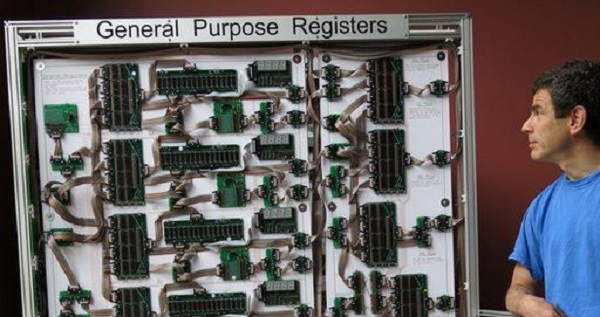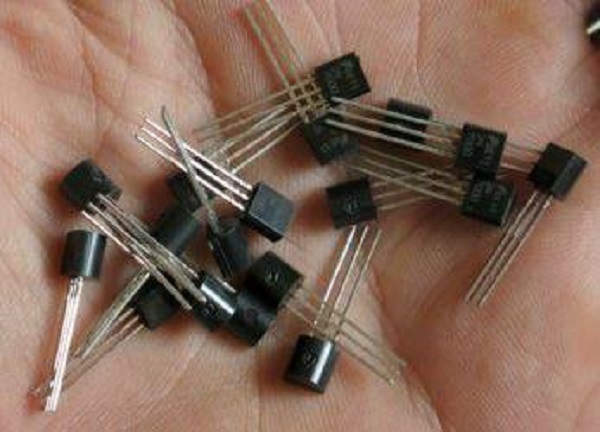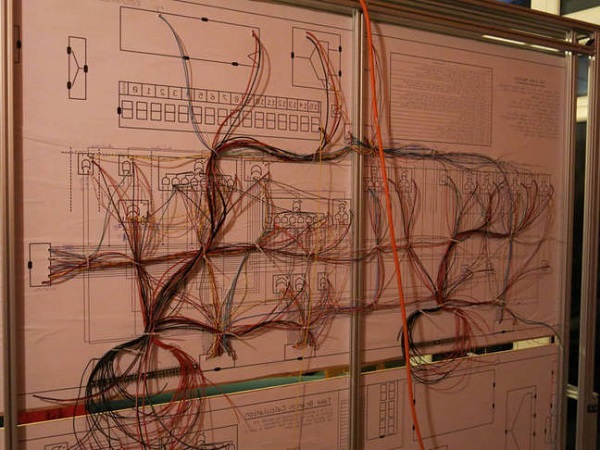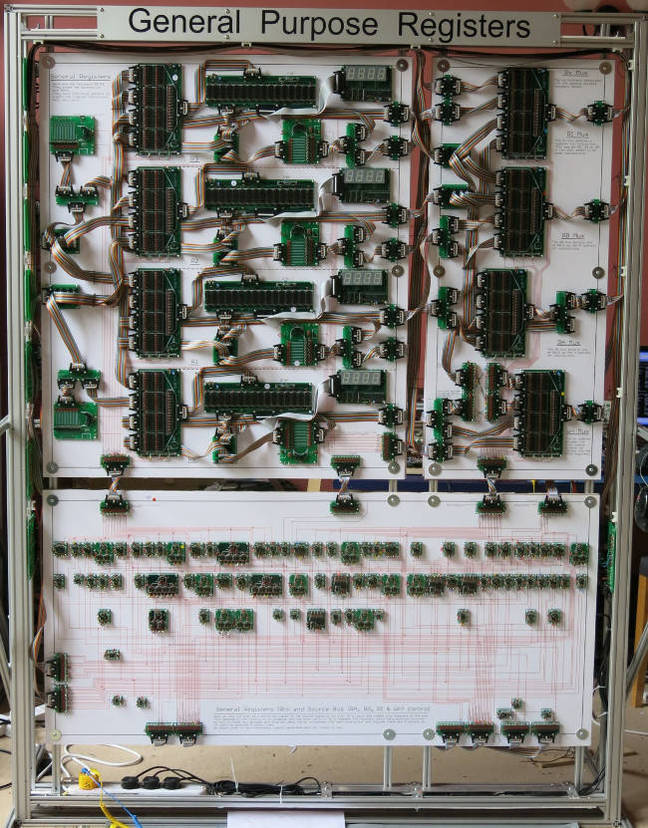While it might be a race between companies on who can create the world’s smallest computer, James Newman is having no part of the competition, instead focusing his expertise on building one of the world’s largest-ever computers.

The obvious question is: how big is it? Well, for one, the computer processor measures 45-feet. Its 16-bit “mega processor” contains 14,000 transistors, and 3,500 LED lights.
 A handful of the 14,000 transistors used in Newman’s computer
A handful of the 14,000 transistors used in Newman’s computer
To date, the project has taken Newman three years to build, and about $30,000 of personal investment.
“I was taken with the idea of being able to see how the thing works,” Mr. Newman, a digital electronics engineer, told the BBC. He added that he hoped the computer would have educational value, but that at this point it’s a bit cumbersome to transport; what’s more, it will likely weigh in the neighborhood of one ton when the project is actually completed.
“I have a visual way of thinking about things, I wanted to be able to see how a computer works and how things flow around within it,” he said. “I intended it as a learning exercise, and I have learned a lot.”
 A snippit of the 100,000 connections required for Newman’s computer to operate
A snippit of the 100,000 connections required for Newman’s computer to operate
Newman, who lives in Cambridge (UK), said that he is now relying on his “determinedness” to finish the project. He said the one thing he is concerned about though is just how much space the six-foot-high processor will take up.
“When it's set up and running in the living room, there won't be much space for living,” he said.
“One of the fantasies is to line the hallway with it.”
 The register section of Newman’s Mega Processor
The register section of Newman’s Mega Processor
Newman said that some of the first programs he plans on running on his mega processor will be Tetris, noughts and crosses, and Life, the 1970s evolutionary simulation game created by mathematician John Conway.
“My mother keeps asking, 'What can it do?' I keep saying, 'It's a computer, it can do anything,” Newman said. “My friends think it's mad, but I think they are also slightly jealous that I can allow myself to do it.”
Via BBC
Advertisement
Learn more about Electronic Products Magazine





